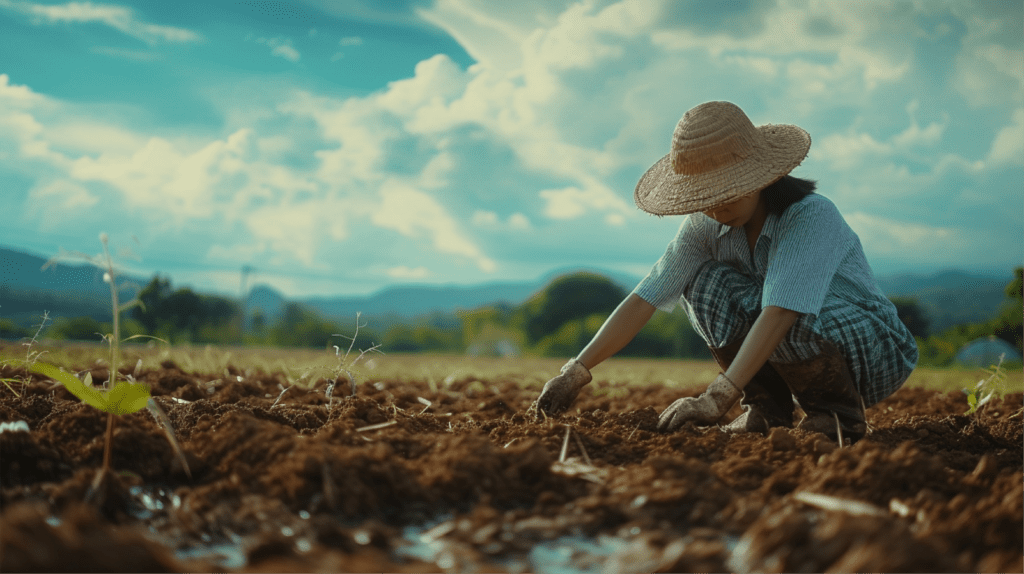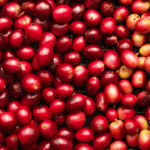On National Soil Conservation Day, we come together to share golden tips for the success of your farming and the preservation of this very important resource for human life
With National Soil Conservation Day, we celebrate the vital importance of the natural resource essential for human life: fertile land. To contribute to the relevance of this date, we prepared an exclusive interview with Taciana Seixas, Technical Market Development Coordinator, and Erivelton Paes, Research and Development Manager at Viter, in order to discuss the main characteristics of a preserved soil and the possible solutions so that this resource is not negatively impacted.
It is essential that we know how to recognize the important role of agriculture in preserving the soil and how good agricultural practices can guarantee health and productivity for future generations. The adoption of methods such as direct planting, crop rotation and straw covering can help protect the soil from erosion, increase its natural fertility and require fewer chemical inputs. Check out the interview:

Q: What are the main aspects you consider when recommending agricultural inputs to rural producers?
Taciana Seixas: It is important to consider the crop, how the soil is, the nutritional aspects that this crop needs and also what the climate will be like, what the climate is promising for this year, so we can work on nutritional, soil and water management in a proper. Firstly, we need to understand what the cultivation is and the soil situation. From this, we also need to understand the farmer's production expectations, carry out a soil analysis to see what the levels of Phosphorus, Calcium, Magnesium, Sulfur and Potassium are. Sometimes it is important to carry out a micronutrient analysis and it is usually necessary to replace zinc. The most important thing is to define the crop and the desired base amount based on it, and then make the calculations for recommending fertilization and replacement of calcium and magnesium, which often happens via liming and plastering. At this point, in addition to calcium, sulfur supplementation also comes in, so that the producer has a soil with an adequate pH for the crop in question to be able to grow in root and absorb nutrients in depth. In dry years it is important that the plant has a deep root in order to suffer less from water stress. Deep roots capture water and nutrients in depth, allowing growth and providing space for flowering, formation of grains or fruits, depending on the crop.
Q: What are the main signs observed in a crop that indicate soil degradation problems and how do you recommend dealing with these problems?
Taciana Seixas: When we think about soil degradation, we talk in addition to nutritional characteristics, including the physical aspect, which often result in the destruction of that same soil in relation to erosion and the lack of growth of green matter. These characteristics indicate an almost total removal of soil protection, which wears down its surface due to the sun, water and intense rain. It is important to rotate crops in this region, in addition to considering soil correction. When we get degraded pasture areas, the first action is to carry out a liming process to try to lower aluminum levels. What helps us to prevent the soil from reaching this situation is direct planting, crop rotation, in addition to applying fertilizers and liming appropriately. It is necessary to eliminate high levels of sodium in the soil and ensure that it has an ideal physical and chemical quality to avoid wear due to erosion and being uncovered. Some points to consider when covering this soil is to carry out analysis, so that it is possible to incorporate the necessary nutrients and make the ideal corrections, avoiding degradation.
Q: What are the main challenges faced by rural producers in relation to soil conservation?
Erivelton Paes: There are two biggest challenges that Brazilian rural producers face within their property to ensure that the soil physics is adequate for the development of the installed crop. The first is basically to prevent erosion, and to do this, it is necessary to create containment curves, allocate terraces so that the speed of the water is reduced and, thus, prevent this soil from being eroded. The second point is to ensure that compaction does not occur in the subsurface, allowing water to penetrate lower layers of the soil, also providing greater aeration for root development.
Q: What types of agricultural inputs do you recommend to promote soil health and quality?
Erivelton Paes: When we talk about promoting soil quality and health, today, there are several tools available to Brazilian agriculture and the one I mention here, which is of great importance, are cover mix seeds. They contain different species of plants with different root development capabilities and this will bring a huge benefit from the point of view of soil physics, breaking up the compacted layers and from the point of view of nutrients, which is exceptional, because it will be able to make the cycling of some nutrients that are in the subsoil and also bring a diversity of plants and consequently, improve the development of crops and the life that lives in that soil. Economic interest will exist in a much more favorable environment for its development. Furthermore, it is necessary to ensure that the soil chemistry is very balanced, so promoting fertility below 20 centimeters is essential. We need to remove this toxic aluminum that has been preventing root development and increase deeper bases, because water will be available in the subsurface and the roots need to be able to develop and search for it. Consequently, it will be possible to go through periods of water stress with much better quality, guaranteeing economic productivity, which is what is most expected.
Q: What soil management practices do you encourage rural producers to adopt?
Erivelton Paes: When we talk about soil management, the main recommendation I would give and that I would make would be exactly conservationist management. So, knowing your area, knowing the slope it has, allocate the terraces according to a well-designed topography, promote a mix of coverage and guarantee an increase in organic matter. And then, based on this mix of coverage and in addition to other management such as increment, bringing organic matter from outside to inside the property. This will bring exceptional conservation management and we will reach a much higher level of productivity. However, conservation management takes time and effort. We won't be able to see results in the first harvest or in the first year. It is necessary to have a development plan and consistency in management so that, from the fourth or fifth year, by the sixth harvest, we already have a balanced and very well developed soil.
And of course, everyone, always consult an agronomist who will have the best technical options to make appropriate recommendations for the development of your conservation management, always aiming for profit and productivity.
Adopting good agricultural practices is a commitment to the future
By preserving the soil, we guarantee food security for future generations and contribute to a healthier environment. Remember: soil is a precious and non-renewable asset, and it is up to each of us to cooperate to protect it.
Don't forget that a well-cared for, healthy and productive soil requires quality inputs, which respect agriculture and contribute to balanced development. To learn more about Viter's proposal and discover the maximum potential of your soil, check out our portfolio.



